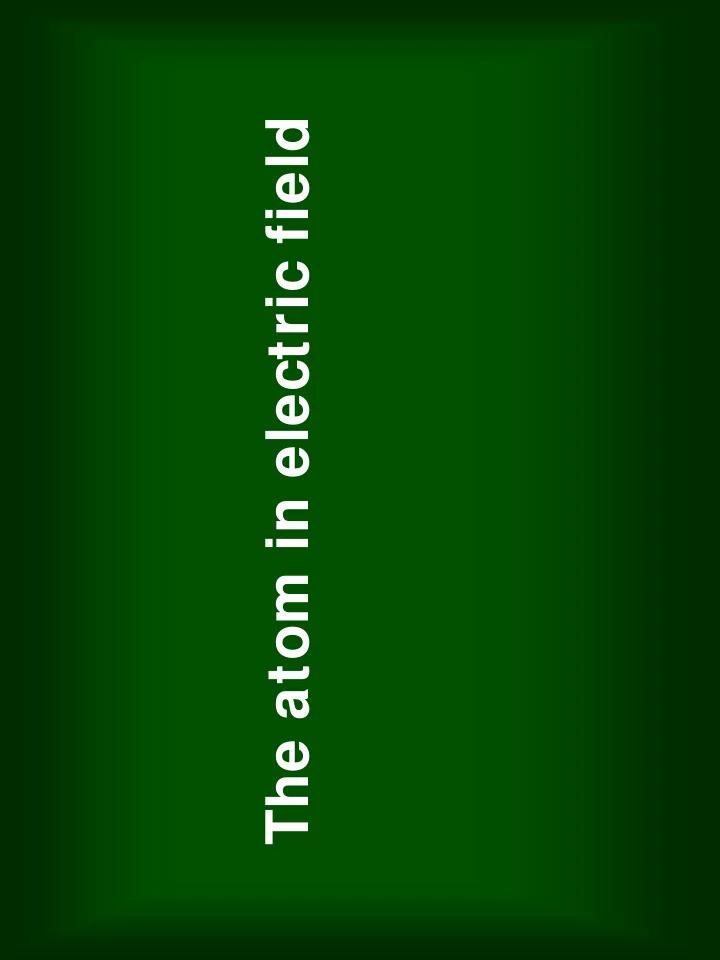

The atom in electric field
The electric field in the direction of the Oz axis • The interaction with the electric field • We assume, it is stronger than the spin-orbit interaction • (valid for E> 10 5 V/ m For the hydrogen atom – the energy levels are • degenerate (except the ground state) For the ground state the first-order perturbation • correction is Because z is an uneven function, this integral is 0 •
More general reasoning: • The orbital part of the integral: • Because • The first-order perturbation correction for the ground • state is 0, there is no linear Stark effect
The excited states are n 2 -fold degenerate in respect • with l and m l We apply the perturbation method for n= 2 • Here • All matrix elements are zero, except that between 2s • and 2p 0
The equation becomes •
The solutions are • for m l = + 1 and -1 for m l = 0 The wavefunctions are for the higher energy level, and for the lower energy level.
For n= 2 we have the linear Stark effect (proportional • with E), because this degenerate level has not a specific parity
Higher energy levels
Taking into account the spin-orbit splitting
For the ground state we calculate the second-order • perturbation correction Replacing En by E2 we obtain the upper limit (in • absolute value) of the correction
Taking into account that • Where we have used the closure relationship • The matrix element can be calculated analytically •
With and • we obtain The exact solution leads to This correction is the quadratic Stark effect
Multielectron atoms We introduce • the z component of the electric dipole . The perturbation leads to The unperturbed energy levels are not degenerated in respect with L, the states have a certain parity.
Because the dipole operator has odd parity, all the • matrix elements will be zero. For multielectron atoms there is not linear Stark effect • The quadratic Stark effect (second-order perturbation • correction): After some calculations one obtains • The degeneracy is only partly removed •
The multielectron atoms has no electric dipole • momentum, and this is the reason why they show no linear Stark effect. The quadratic Stark effect may be interpreted as the • induction of the dipole momentum by the external electric field, and the interaction of the induced momentum with this field. The hydrogen atom behaves, as if it would have electric • dipole momentum.
Recommend
More recommend